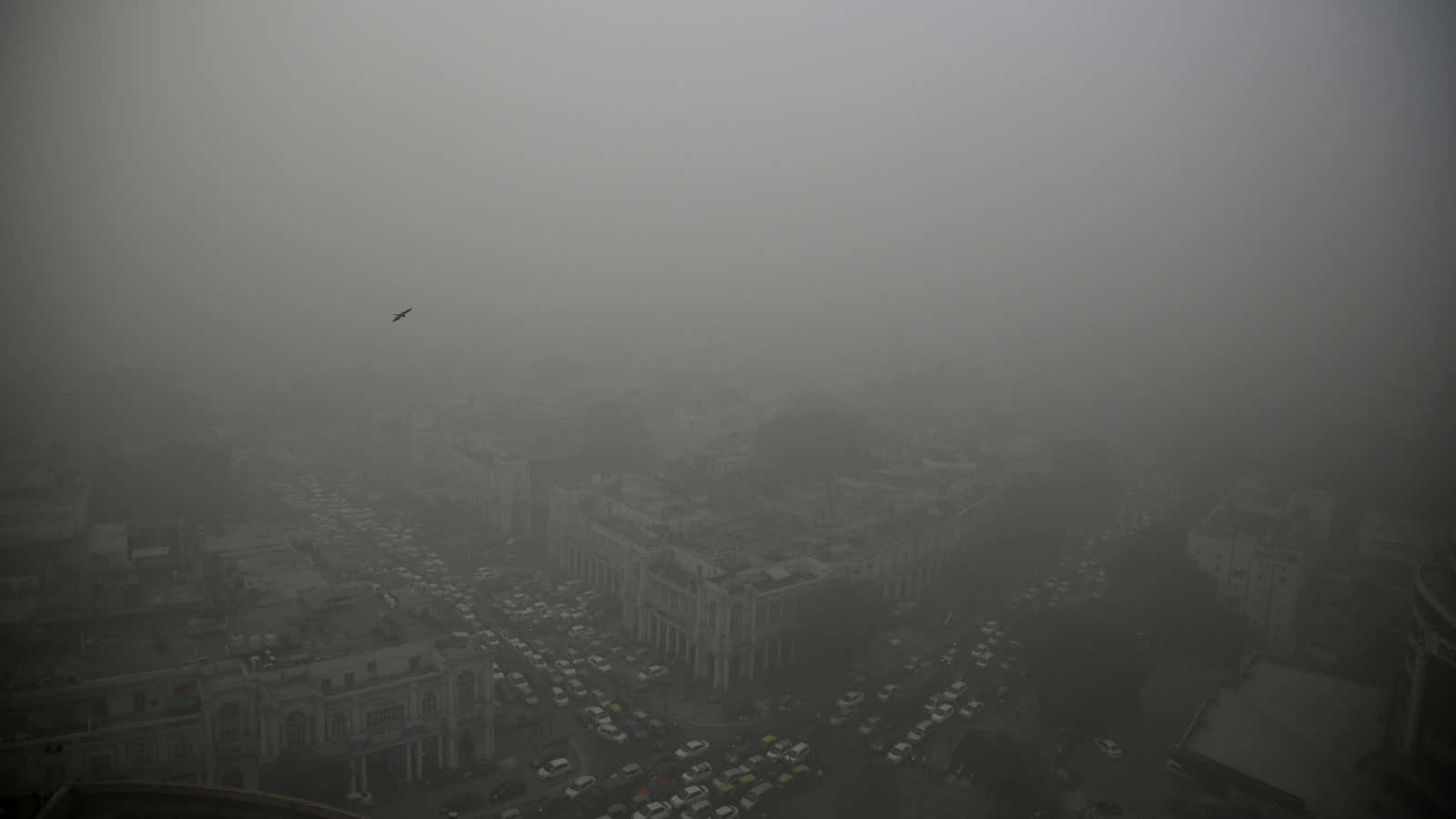Till just a few days ago, a choking Delhi was on top of the minds of many Indians, particularly the chatterati and opinion-makers. It seemed like a momentum was building up towards finding potential permanent solutions to the problem of chronic pollution in India’s capital.
With the Narendra Modi government unleashing a whole new issue to debate—demonetising some of the currency denominations—on Nov. 08, the big story of Delhi’s still-deadly air pollution took a backseat.
While visibility has improved and particulate matter (PM) has declined from the alarming levels seen in the past few weeks, the national capital’s air quality index (AQI) still remains unhealthily above the safe limit of 50. For environmental activists, this proves that public health is still seriously at risk.
“There was a public momentum that was building up (against air pollution). The news of demonetisation has shifted the public focus, as well as media focus, from that public health emergency we are facing,” Sunil Dahiya, a campaigner for Greenpeace India, said.
After the government decreed that existing Rs500 and Rs1,000 notes were no longer legal tenders, millions of Indians desperate to buy daily needs, have thronged ATMs and banks looking to exchange their now-worthless cash. For Delhi residents, this has meant spending long hours of exposure to filthy air. They have little choice.
Unfortunately, there’s been no similar order to tackle the much more pressing concern of air pollution.
India’s supreme court, the national green tribunal, and the Delhi high court have pushed the city’s government to step up efforts to combat the problem and implement better monitoring and response systems. Still, Delhi and indeed India itself are a long way from taking tough steps.
But these steps are sorely needed as an estimated 600,000 Indians died of air pollution-related illnesses in 2012, according to the World Health Organisation (WHO). The country, thus, accounted for a fifth of such deaths worldwide.
The alarming smog that has shrouded Delhi for days over the past few weeks, capturing global attention, was in fact just the most visible symptom of a much larger problem the city has been battling for years: an overwhelming number of polluting vehicles.
“Diesel vehicles are to be blamed,” Renuka Saroha, an independent consultant who has worked on air pollution issues since 2013, said.
Despite the established health risks associated with toxic emissions from diesel vehicles, they’re only growing in popularity in India. The share of diesel vehicles in new car sales has been steadily increasing over the years, hitting around 50% in 2014, according to the Centre for Science and Environment (pdf).
Saroha said it’s up to consumers to understand the real causes of air pollution and push back.
Of course, Delhi’s inadequate public transport system makes this harder to do. Its metro and bus services ferry millions of passengers every day but their limited capacity has led to overcrowding, making it difficult to convince residents to go car-free. That’s why the government needs to do more.
So the recent public attention on Delhi’s long-running crisis and its serious health effects was an opportunity to push the government for big changes.
Lessons from Los Angeles
The winds blowing smoke from the farms of neighbouring states, the polluting coal power plants and coal-based industries in its vicinity, and the over 8.8 million vehicles plying on its roads (as of 2015) are not helping the situation in Delhi. Stricter environmental regulations to lower emissions are what the city needs.
For this, Delhi’s government and residents should look to Los Angeles. From the 1940s to the 1960s, the city battled its own apocalyptic smog, the result of vehicular and industrial pollution. However, following strict regulations on emissions in the late 1980s, air quality drastically improved over the next 20 years. Today, LA’s AQI ranks within safe limits, while Delhi’s remains in the red zone.
Such change requires a big shift in thinking, one that gives more importance to health rather than economic costs.
And that’s going to be the big struggle in the years to come.
“In India, despite this national health emergency situation, we tend to go by the interest of the polluters or the interest of companies,” Greenpeace’s Dahiya said. “Public health is not a priority, whereas the economic interest of the polluters is.”
We welcome your comments at ideas.india@qz.com.
